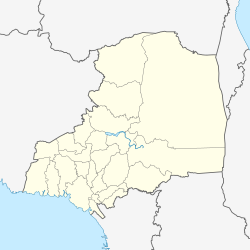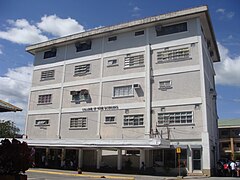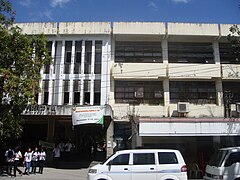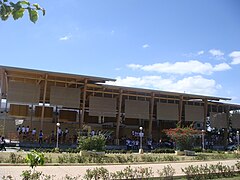The Xavier University – Ateneo de Cagayan, also known simply as the Ateneo de Cagayan or Xavier is a private, Catholic, coeducational, basic and higher education institution. It is operated by the Philippine Province of the Society of Jesus in Cagayan de Oro, Misamis Oriental, Philippines. Founded in 1933 as the Ateneo de Cagayan, it became the first higher education institution in Mindanao to receive a university status a year before its sister school Ateneo de Manila. It was given its present name in honor of the Jesuit missionary St. Francis Xavier.

Tarlac State University is a public university located in Tarlac City, Philippines. Established in 1906, it is the flagship academic institution of higher education in the province offering different degree programs through its ten colleges and three campuses.

Cebu Doctors' University, also referred to by its acronym CDU and colloquially Cebu Doc, is a private nonsectarian coeducational higher education institution located in Mandaue City, Cebu, Philippines. It was founded in 1973 at Cebu City as Cebu Doctors' College (CDC), the school was formally renamed in 2005 as Cebu Doctors' University (CDU). It is organized into eight colleges, a Graduate school, and as of 2016, a Senior High school.

West Visayas State University is a public normal research university located in La Paz, Iloilo City, Western Visayas region of the Philippines. It was established in 1924 as Iloilo Normal School under the tutelage of the Thomasites, but dates back its founding in 1902 as a part of Philippine normal school system with Iloilo National High School established by the American colonial government. It later became West Visayas State College in 1965 and acquired its university status becoming West Visayas State University in 1986.

Cagayan State University, established in 1978, is the largest state institution of higher learning in the Cagayan Valley Region of the Philippines.

The Technological University of the Philippines commonly known as TUP, is a coeducational state university in the Philippines. It was established in 1901 by the Philippine Commission. TUP has its main campus in Manila and satellite campuses in Taguig, Cavite, Visayas, Batangas, and Quezon.

The Iligan Institute of Technology, commonly referred to as, is a public coeducational institution of higher learning and research university located in Iligan City, Philippines, charted in 1968 by Republic Act 5363 and integrated as the first autonomous unit of the Mindanao State University System in 1975.

The Technological Institute of the Philippines is one of the country’s engineering colleges that also offers programs in computing, architecture, business, education, and the arts. The school is located in Metro Manila, Philippines. It is a private non-sectarian stock school founded on February 8, 1962, by a group of educators headed by Demetrio A. Quirino, Jr. and Teresita U. Quirino.

The Eulogio "Amang" Rodriguez Institute of Science and Technology is a public college in Santa Mesa, Manila in the Philippines. It was named after Eulogio Rodriguez, one of the longest serving senators in the country.
The University of Southern Philippines Foundation (USPF) is a private, non-sectarian university in Cebu City, Philippines.

The University of Science and Technology of Southern Philippines is a state university system in the Philippines established on August 16, 2016, by virtue of Republic Act 10919 through the amalgamation of the Mindanao University of Science and Technology (MUST) in Cagayan de Oro and the Misamis Oriental State College of Agriculture and Technology (MOSCAT) in Claveria, Misamis Oriental. Both campuses are located in Northern Mindanao, considered the Gateway to Mindanao, which offers a strategic locational advantage for the institution to train and develop students from all the other regions of Mindanao.
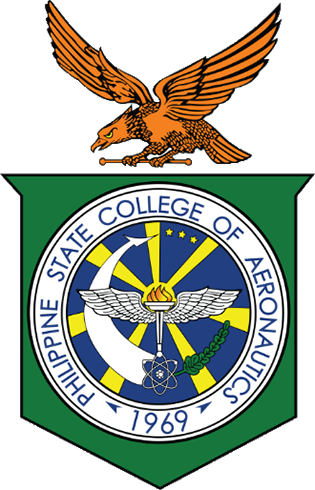
The Philippine State College of Aeronautics is a state college in the Philippines specializing in aeronautics and aviation. Its main campus is in Pasay, Metro Manila, with other campuses located across the country: Floridablanca, Pampanga; Lipa, Batangas; and Lapu-Lapu City. It is the only institution in the Philippines that offers masters and doctoral programs in aeronautical education and management.

The Batangas State University The National Engineering University is a state university in the province of Batangas, Philippines. Established in 1903 as a training school, Batangas State University is the oldest higher education institution in the region. It was granted a state college status in 1968, renamed Pablo Borbon Memorial Institute of Technology, and was finally elevated into a state university in 2001. At present, the university has eleven campuses in Batangas.
Southern Luzon State University, formerly known as Southern Luzon Polytechnic College (SLPC), is the premier, state-funded higher education institution in Quezon Province in the Philippines operating by virtue of Republic Act 9395. It is composed of 11 campuses in the province of Quezon, with the main campus situated in the Municipality of Lucban.
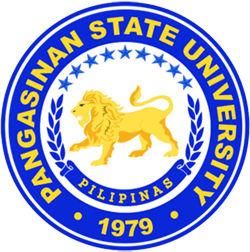
Pangasinan State University, also referred to by its acronym PSU or PangSU,) is a public university in Pangasinan province, Philippines. The university was founded in its current form in 1979, although its origins trace back to the 1920s. PSU is notable for its many locations throughout the province of Pangasinan. It is mandated to provide advanced instruction in the arts, agricultural and natural sciences as well as in technological and professional fields. Its main campus is located in Lingayen, Pangasinan. Other campuses are located in Alaminos, Asingan, Bayambang, Binmaley, Infanta, San Carlos City, Santa Maria, and Urdaneta City. The PSU School of Advanced Studies (SAS) is located in Urdaneta City and the Open University Systems (OUS) is located in Lingayen Campus.
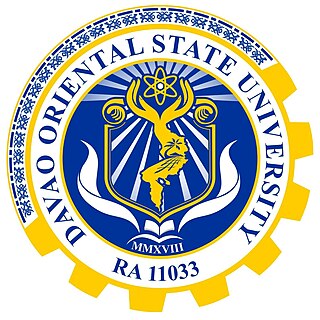
The Davao Oriental State University (DOrSU) is a state-funded research-based coeducational higher education institution in the City of Mati, Davao Oriental, Philippines. It was founded on December 13, 1989.

The University of Ilocos Philippines(UIP) (Filipino: Pampamahalaang Pamantasang Politekniko ng Ilokos Sur) formerly known as (Ilocos Sur Polytechnic State University or ISPSU) is a public college in the Philippines. It was founded in 1998 by the Philippine Congress. Its main campus is located in Santa Maria, Ilocos Sur.

The Davao del Norte State College is a public college in New Visayas, Panabo City, Philippines which provides instruction and progressive leadership in education, engineering, arts, sciences, fisheries, and other fields.
Higher education in the Philippines is offered through various degree programs by colleges and universities—also known as higher education institutions (HEIs). These HEIs are administered and regulated by the Commission on Higher Education (CHED).
The Bulacan State University College of Business Administration is a college within the BulSU system which offers business and business-related courses. Before the college was established in 2011, the university offered business administration courses through its College of Social Sciences and Philosophy (CSSP). In 2011, however, CSSP was divided into three colleges: CSSP, College of Criminal Justice Administration (CCJE), and CBA. The three colleges continue to share the university's APP Hall.

